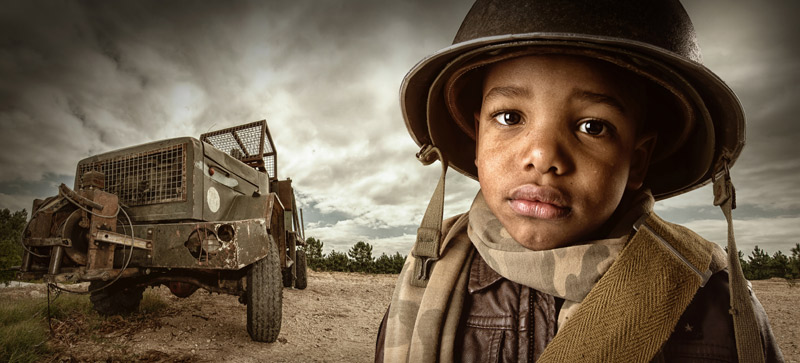

Many girls are also recruited by force, many of them then becoming victims of sexual violence. They are left with psychological and physical scars, which often remain with them for the rest of their lives. These are traumatic experiences for the children. They have to set up explosive devices and learn to handle weapons. They are also often used as messengers, spies or porters. Children are kidnapped or lured with false promises and then trained to kill. We are constantly working to create nurturing, conducive, resilient communities and sustainable environments to guarantee the fulfillment of child rights in every context.In almost all armed conflicts, children and young people are abused as soldiers and forced to engage in conflict, particularly in crisis areas in African and Asian countries. This includes safeguarding the right to basic survival, development, protection and effective participation of children, as per the United Nations Convention on the Rights of the Child. The Red Hand Movement, therefore, while being a protest against the use of child soldiers, also symbolises for us the larger fight against the violation of child rights the world over.


All of these factors scar their formative years and limit their opportunities for healthy growth and development. Children also take to addiction and gambling, and become vulnerable to abuse. As families here struggle to make ends meet and afford two meals a day, many children are employed in child labour and are unable to complete their school education. In a community like Ambujwadi, basic amenities - water, sanitation, education, healthcare are fairly inaccessible, accounting for a high number of malnourished children and youth. In the local communities too, child rights violations of different types are found, prominent among them being child labour, physical, emotional and sexual abuse of children, limited access to child health and education avenues.

Child soldiers often lack access to education, healthcare services, rehabilitation support and are victims of violence, abuse and exploitation. They are also exposed to a language of violence which has an indelible impact on them. We will continue to lend our support to the movement against the use of child soldiers with awareness drives, and by participating in discussions that take place on the issue.īoth internationally and at a local level, children are often denied their rights. While this was a day-long initiative, it certainly doesn’t end here. Taking forward the struggle for child rights In this way, 213 red hand prints of the stakeholders upholding child rights, including those of the children, youth, community members and administrative officials were gathered on five white canvas cloths and have been displayed in the community. Observing Red Hand Day with the health officer, police officials, and the local MLA The local children’s group Bal Adhikaar Sangharsh Sangatana (BASS), youth group Malvani Yuva Parishad (MYP) and the adolescent girls group, Nakshatra, worked with us to reach out to the most marginalised areas in the Ambujwadi basti to educate children, youth and community members about the Red Hand Movement. To show our support for the children in conflict, we observed Red Hand Day or International Day against the Use of Child Soldiers on 12 February 2018 with our community members in Ambujwadi, Malad, Mumbai. We condemn the weapons training of children and their use as child soldiers across the world. A 2017 UN report on Children and Armed Conflict reports that 56 non-state armed groups and seven state-armed forces of 14 countries are still guilty of recruiting children. It is also feared that the number (in tens of thousands or probably even more than a hundred thousand) may be grossly under-reported. Globally, estimates of how many child soldiers are engaged in war and armed conflicts vary widely. In solidarity on Red Hand Day The global challenge


 0 kommentar(er)
0 kommentar(er)
